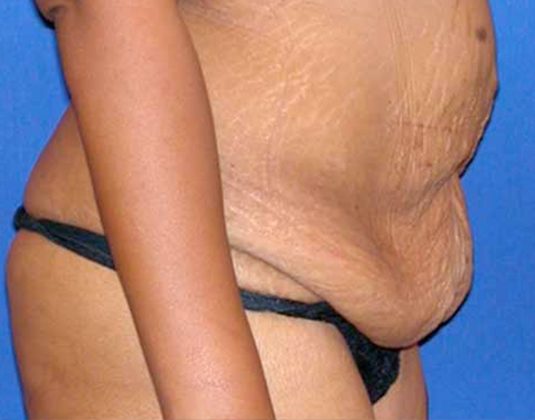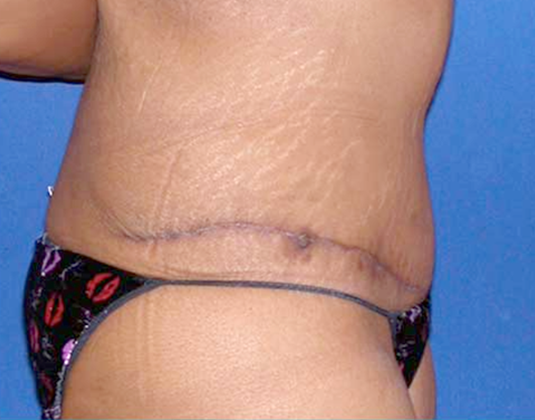Abdominoplasty / Tummy Tuck
This procedure flattens the stomach, improves the waistline, and removes sagging skin from the lower stomach. Many women who have been pregnant are candidates for abdominoplasty. The muscle layer of the abdominal wall contains a tough sheet of tissue, called fascia, which is not elastic. After being stretched by pregnancy, it does not snap back to its old shape, leaving a “poochy” belly. This situation is often accompanied by over-stretched skin, which sags and may have stretch marks. Abdominoplasty involves tightening the fascia with sutures, which trims the stomach and narrows the waistline, and removes over-stretched skin, with or without repositioning the navel. You may be a candidate for a Mini, Standard, or Extended Abdominoplasty. The procedure is usually performed under general anesthesia in a hospital or surgery center as an outpatient. Mini-abdominoplasties can sometimes be performed under sedation and local anesthesia. Mini abdominoplasty addresses the lower portion of the abdomen and has the shortest incision. Liposuction may be used in the upper abdomen, but the skin is only removed from the lower abdomen. The muscle and fascia are tightened below the navel.
Standard abdominoplasty will help with the upper and lower abdomen and includes tightening of the muscles above and below the navel, removal of excess skin, with or without liposuction for the waist. The incision for this procedure is below the bikini line and usually stays between the hip bones. This also involves repositioning the navel.
Extended abdominoplasty addresses all the same issues as a standard abdominoplasty, but on a larger scale extending to excess skin of the flanks and hips region. This procedure is usually reserved for those who have had massive weight loss. This incision is the longest and extends onto the hip below the bikini line.
Total recovery time from abdominoplasty is 6 weeks, with most patients feeling good and returning to work after 2 weeks. Major risks of the surgery include, but are not limited to fluid collection, bleeding, infection, and numb skin. Patients will usually go home with two drains to help prevent fluid collection. Pain catheters with local anesthetic help to decrease pain after the procedure.
Abdominoplasty is considered a cosmetic procedure and is not covered by insurance.

Set up an appointment with Dr. Miles to discuss all your options.


